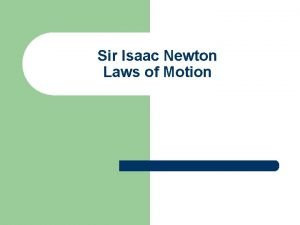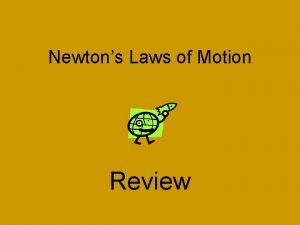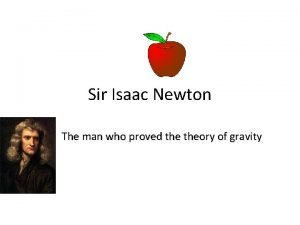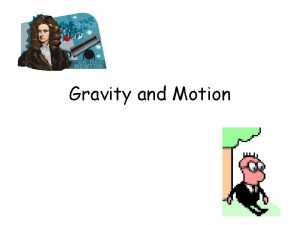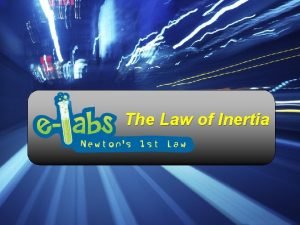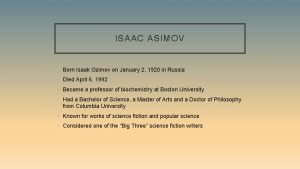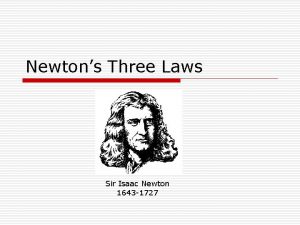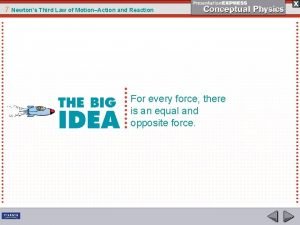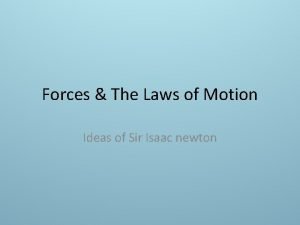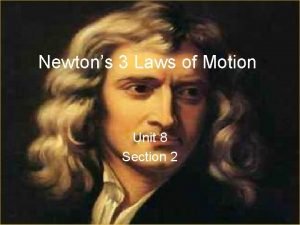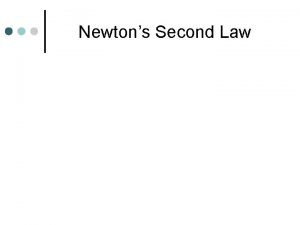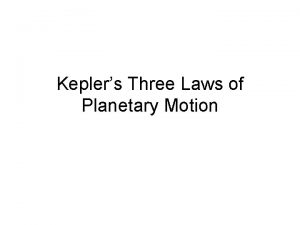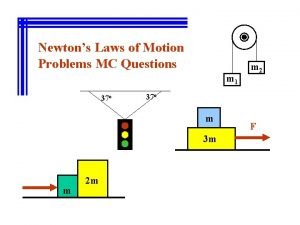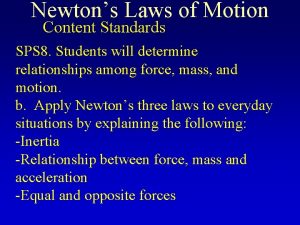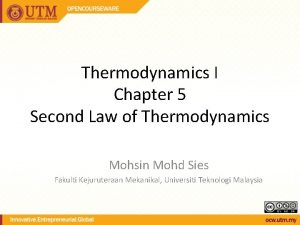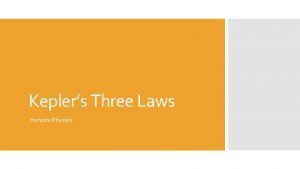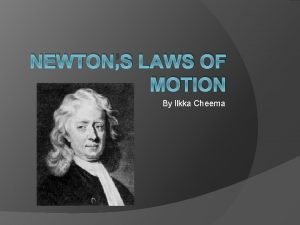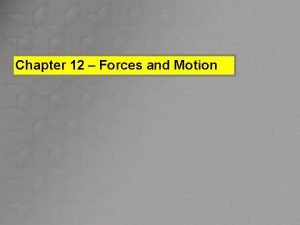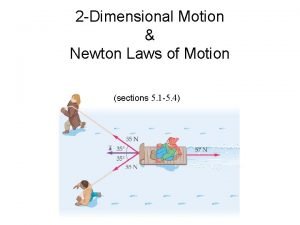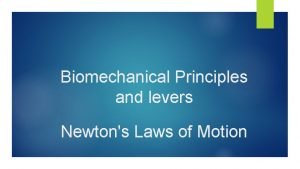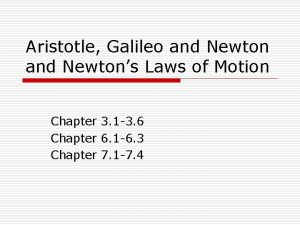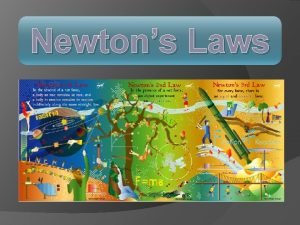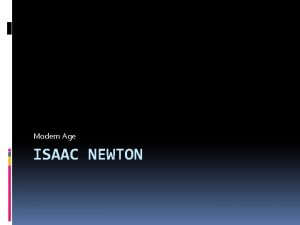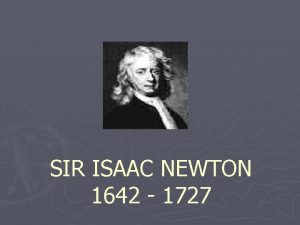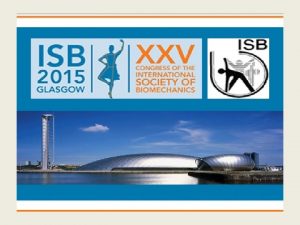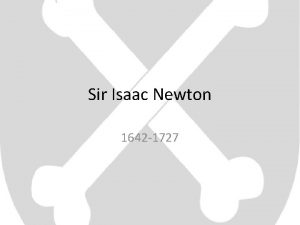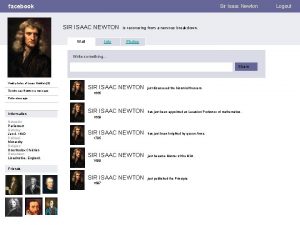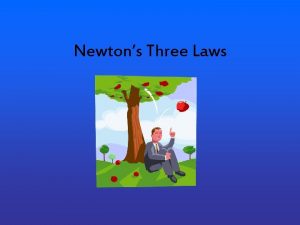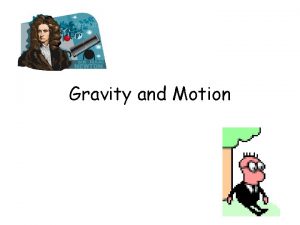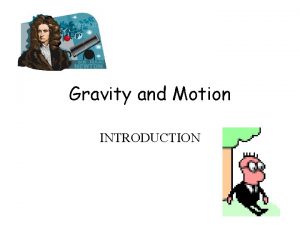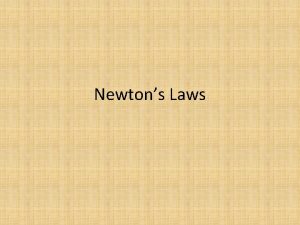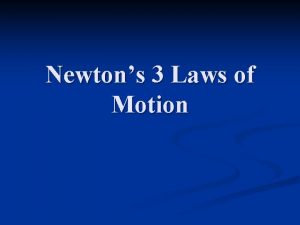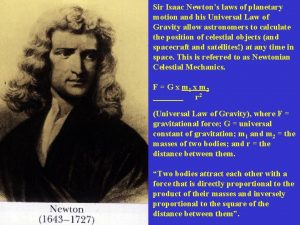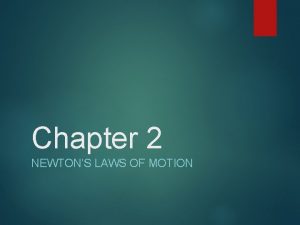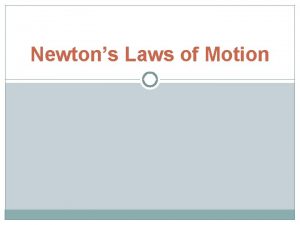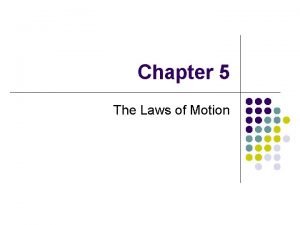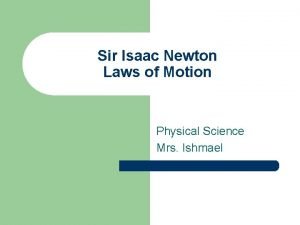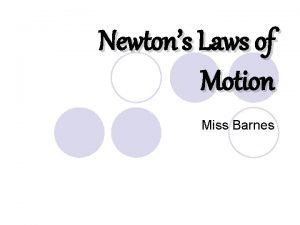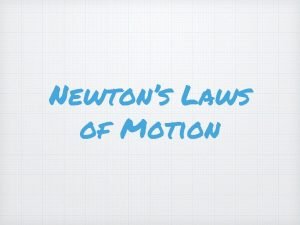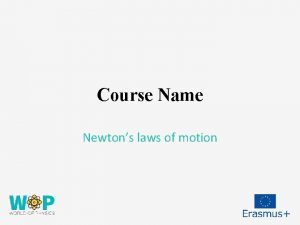Laws of Motion Laws of Motion Sir Isaac




































- Slides: 36

Laws of Motion

Laws of Motion Sir Isaac Newton (1643 -1727)

• 1620 Pilgrims land at Plymouth Rock

• 1643 Taj Mahal completed. 1644 End of Ming Dynasty in China

• 1706 Benjamin Franklin is born in Boston. • 1732 George Washington is born in Virginia.

Laws of Motion Sir Isaac Newton: l English scientist and mathematician l Published his book Philosophiae Naturalis Principia Mathematica (Mathematic Principles of Natural philosophy) in 1687.

Laws of Motion Sir Isaac Newton: cont. l Law of Gravity - Physical law describing the gravitational attraction between objects with mass.

The Gravitational Potential Energy 2 objects with mass!

Laws of Motion Newton’s Laws of Motion Describe the motion of objects (except near speed of light)

Law Name Definition Example/ Demo

Laws of Motion Newton’s 3 Laws of Motion 1. 2. 3. Law of Inertia F=m·a Action-Reaction

Laws of Motion Inertia: l The resistance an object has to change its state of motion. l A more massive object has a greater resistance to change in its state of motion.

Laws of Motion FORCE Any push or pull on an object

Laws of Motion n o p u d e t c d a e c s n s a e l l a n b U n u n a. e y c b r fo Newton’s First Law of Motion 1. 2. An object at rest tends to stay at rest… An object in motion tends to stay in motion

Laws of Motion Forces can be BALANCED or UNBALANCED l Balanced forces are equal in size and opposite in direction (no net force) l Unbalanced forces are not equal in size or not in opposite direction. (net force)

Laws of Motion Balanced forces: can remain still or remain moving

Laws of Motion Unbalanced forces – Begin moving or change direction

Laws of Motion

Laws of Motion Object at rest… stays at rest unless acted upon by a unbalanced force

Laws of Motion Object in motion… stays in motion unless acted upon by a unbalanced force

Laws of Motion Wait just a minute… If objects in motion tend to stay in motion, why don’t moving objects keep moving forever?

Laws of Motion l A book sliding across a table slows down and stops because of the force of friction. Friction!

Laws of Motion l If you throw a ball upwards it will eventually slow down and fall because of the force of gravity. Gravity!

Laws of Motion In outer space, away from gravity and any sources of friction, a rocket ship launched with a certain velocity would keep going at that same velocity forever.

Laws of Motion Newton’s Second Law of Motion Force equals mass times acceleration. F = m·a Force units: Kg m/s 2 = N

Laws of Motion Something very massive that is changing speed (accelerating) very slowly can still have great force.

Laws of Motion Something with low mass that is changing speed rapidly (high acceleration) can have a great force.

Laws of Motion F=m·a F= 1000 kg X 0. 05 m/s 2 F= 50 N

Laws of Motion F=m·a F= 2000 kg X 0. 05 m/s 2 F= 100 N

Laws of Motion Check Your Understanding: 1. What is the force when a 3 kg book is thrown at a 4 m/s 2 F=m·a F = 3 kg x 4 m/s 2 F = 12 N

Laws of Motion Newton’s Third Law of Motion For every action there is an equal and opposite reaction.

Laws of Motion Newton’s Third Law of Motion Newton's 3 rd law always involves more than one object.

Laws of Motion Newton’s Third Law of Motion

Laws of Motion Why does your toe hurt when you kick a soccer ball? The soccer ball is ‘kicking’ you back. ACTION - REACTION

Law 1 st Name Law of Inertia Definition An object at rest will stay at rest, and an object in motion will stay in motion at constant velocity, unless acted upon by an unbalanced force. 2 nd F = m·a Force equals mass times acceleration 3 rd Action. Reaction For every action there is an equal and opposite reaction Example/ Demo

Laws of Motion Newton’s Laws of Motion Activities
 3 laws of motion
3 laws of motion Newtown laws of motion
Newtown laws of motion F=ma
F=ma Sir isaac newton
Sir isaac newton Http://www.exploratorium.edu/ronh/weight/
Http://www.exploratorium.edu/ronh/weight/ Inertia in daily life
Inertia in daily life Sir isaac asimov
Sir isaac asimov Newton's three laws
Newton's three laws Useless laws weaken the necessary laws
Useless laws weaken the necessary laws Newton's 3 laws of motion
Newton's 3 laws of motion Newtons third law of motion
Newtons third law of motion Derek leaves his physics book on top of a drafting table
Derek leaves his physics book on top of a drafting table 3 laws of motion names
3 laws of motion names What are newton's 3 laws of motion in order
What are newton's 3 laws of motion in order Newton 2 law of motion
Newton 2 law of motion Kepler's three laws of planetary motion
Kepler's three laws of planetary motion A stack of books rests on a level frictionless surface
A stack of books rests on a level frictionless surface Newton's first law example
Newton's first law example Pmm1 in thermodynamics
Pmm1 in thermodynamics Newton's laws
Newton's laws Newton's third law
Newton's third law Brainpop newton's laws of motion worksheet answer key
Brainpop newton's laws of motion worksheet answer key Laws of motion
Laws of motion Non uniform circular motion
Non uniform circular motion Kepler's 3 laws of motion
Kepler's 3 laws of motion What are newtons 3 laws
What are newtons 3 laws 3 laws of newton
3 laws of newton Three laws of motion
Three laws of motion Chapter 12 forces and motion
Chapter 12 forces and motion Newton's laws of motion
Newton's laws of motion Newton's law of motion in biomechanics
Newton's law of motion in biomechanics The 3 law of motion
The 3 law of motion Aristotle laws of motion
Aristotle laws of motion What are newton's laws
What are newton's laws Aristotle galileo and newton ideas about motion
Aristotle galileo and newton ideas about motion Who formulated the three laws of motion
Who formulated the three laws of motion Facts about newtons first law
Facts about newtons first law

